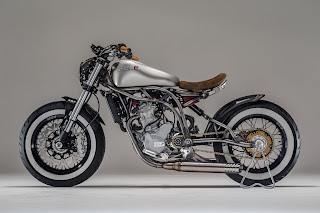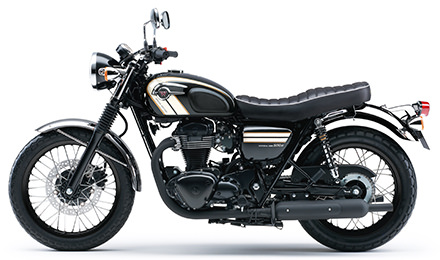In terms of quantity and quality of the operations, the unrivalled Aprilia V4 has every right to consider itself a radically new unit: if there were any doubts, they are quickly dispelled by the more than 16 additional HP and the 2.5 kg less than its predecessor. This is one of the Aprilia RSV4 RR and RF elements that is most closely derived from the racing world and the one on which the Aprilia Racing Department was able to work the most with the factory production.The primary and unique characteristics of this gem of Italian technology, the ones that led to the creation of the best superbike of all times, remain unchanged. This is the world's first full scale production motorcycle with a high performance narrow V4 engine, the most revolutionary and powerful engine ever built by Aprilia. An engine that has been made unmistakeable because of the use of “total” electronics, because of its extremely compact size and exceptional light weight.
The main goals of the V4 project were clear: increase power across the board, exceeding the threshold of 200 HP maximum peak and at the same time increase the already generous torque at all engine speeds.To achieve them work was done on decreasing internal friction, improving combustion efficiency and fluid-dynamic efficiency as well as on increasing the maximum rotation speed. The Noale engineers redesigned almost all of the internal and external elements.
Starting from the top, the 65° V4 has an air box with filtering elements perpendicular to the air flow, studied with sophisticated CFD (Computational Fluid Dynamics) systems in order to minimise load losses and maximum pressure in the intake ducts.The upper injectors are new, whereas the variable setting intake ducts were redesigned to the benefit of an even wider range of management in terms of their travel As with previous models,
each bank has a dedicated servo unit actuating the two throttle bodies of that bank only. In order to improve the fluid dynamic performance,
the heads were redesigned with intake and output ducts that have new geometries and contouring on the ends machined by a numerically controlled tool.
The combustion chambers are no longer obtained through a fusion process but by a finer, numerically controlled machining process. In order to improve reliability and precision under extreme loads the height of the valve seat seals was increased and the internal cooling and oil discharge circuit were consequently modified. The heads now have a triple layer of gaskets. The timing system confirms the innovative mixed chain and gear kinematics of the Aprilia V4 (with the chain camshaft driving only the intake camshaft, which in turn drives the exhaust camshaft via a gear) which allows for extremely compact heads especially in the area beneath the frame spars, much narrower than would otherwise be possible. In order to increase the maximum rotation speed a painstaking study was conducted on
lightening the parts in motion of the elements included in the heads. All four valves are now in precious and lightweight
titanium (the intake valves are oversized at 33 mm); the valve springs are completely new and the relative tappets and caps were lightened. The
camshafts have a brand new profile and were lightened by a whole 600 grams. Moving farther downward, the crankshaft now has connecting rod pins reduced to 36 mm in diameter with 450 grams more weight, while the Pankl connecting rods are lighter by a total of 400 grams.
ensures maximum rigidity and consistent performance. The upper half of the engine case is now made with a new shell fusion and has been lightened (-1.3 Kg) and reinforced; it also now has an optimised ventilation system in order to reduce power loss due to air pressure inside the engine crankcase.
The lubrication system has also been redesigned and optimised. A brand new oil sump ensures increased draught no matter what position the engine is in (for example in the most extreme leans or in maximum acceleration/deceleration conditions) despite the oil level being decreased in order to decrease friction. The “rose pipe” is also new (oil pump intake duct), now equipped with a new overpressure valve and a filter in an optimised position. The piston cooling oil nozzles were also replaced and the gearbox now has a valve regulated direct hydraulic lubrication circuit. The latter uses lightened drive shafts and gears (-0.35 Kg), a lightened primary drive (-0.1 Kg) and takes advantage of
ratios which have been optimised to fully exploit the increased engine power.
The entire exhaust system has also been completely redesigned with revamped electronic valve management, now equipped with two oxygen sensors (one per bank), while a
more powerful ECU contributes to more precise management of the engine in the area of maximum rotation
achievable.




















































